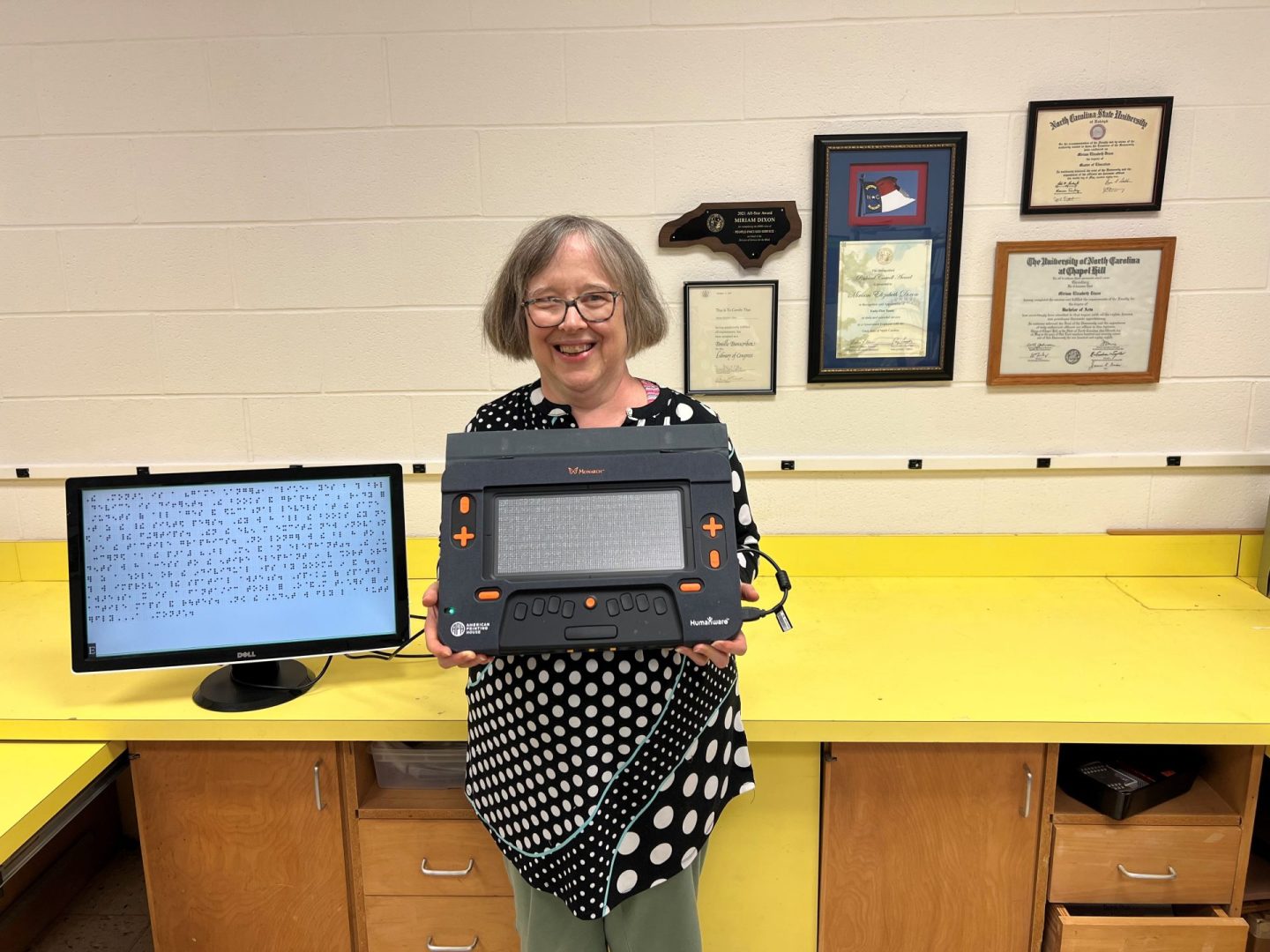The Customer Service team will be unavailable on December 24 and 25. They will return to their normal hours on Thursday, December 26.
CloseA Fresh Perspective: Teaching Adults who are Blind or Have Low Vision with the Monarch

Orientation and mobility, assistive technology, and independent living skills are vital for adults who are blind or low vision to master as they learn to live successfully on their own. Miriam Dixon, a Braille Teacher at the Career and Training Center at the Division Services for the Blind in North Carolina, works with her students to cultivate other important skills, such as reading braille and finding ways to understand the surrounding world. The Monarch refreshable braille display has assisted Miriam with her lessons and inspired her to create more educational, tactile resources.
Monarch Benefits for Adult Students
Miriam serves adults ages 18-50+ and introduces the Monarch to those who already know braille. With its 10 lines of braille and ability to display tactile graphics, the device is perfect for advanced readers. “Sometimes, if they need help with the line spacing, I can quickly change it from double to single spaced,” said Miriam. “It’s a good introduction to the commands for braille technology, too.” One student is utilizing the Monarch to brush up on her UEB skills as she is studying to become a braille teacher.
The same student has benefitted from opening graphics from APH’s Tactile Graphic Image Library (TGIL) on the Monarch’s Tactile Viewer app. Pictures of real-world places were at the student’s fingertips for the first time, allowing them to find out what they looked like. For example, the student opened an image of a football field. “There were tears of joy,” said Miriam. “It was so shocking to her, so surprising to her, to learn that it was rectangular.” Similarly, the student had traveled to mountains, but she didn’t know what a mountain range was or what it looked like. Viewing a related tactile image helped her grasp the concept better. “Her fascination is just a beautiful thing to see,” said Miriam. Miriam also helped the student discover the shapes of elevator buttons after Miriam requested the graphic to be added to the TGIL. Email tgfeedback@aph.org with your image suggestions.
Making Tactile Graphics for the Monarch
With the help of Microsoft Word, Miriam is creating her own tactile graphics to teach braille to her students who recently lost their vision. “I emphasize that you do not feel dots when you read braille,” Miriam said. Rather, readers feel the shapes of the tactile letters. To enforce this concept, Miriam is making a larger version of each braille letter in the form of a tactile graphic. By feeling these symbols in a bigger format, students will memorize their shapes instead of focusing on the individual dots.
The second set of graphics Miriam is developing will assist her students who know braille but are struggling to sign their name in cursive. “There’s a Journal of Visual Impairment & Blindness article that I’ve kept since September of 1978 on teaching cursive handwriting with the braille cell,” said Miriam. In this strategy, students use the dot positions of the braille cell to form letters. Initial attempts may make these letters appear more squared off instead of the loopy cursive script, but with time, students will learn to add more flair to their letters. Currently, the TGIL has cursive letters, but they are fancier than the ones a student can produce by following the article’s instructions. “I am trying to figure out how to make a graphic using the dot positions that are given in that article and recreate simplified cursive letters,” said Miriam. When Miriam is finished crafting these images, students will be able to adhere to the article’s instructions and review the related graphics to check their work. Through this method, her students will be able to master cursive.
Purchase the Monarch today. If you have a Monarch or are supporting a student with a Monarch, join the Monarch Users Facebook group to connect with others, learn about the device, find resources, share ideas, and more.
